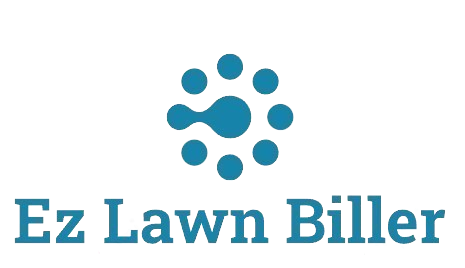Optimize your lawn business routes with our step-by-step guide. Discover tips and tools to enhance efficiency and customer satisfaction.
Step-by-Step: How to Optimize Routes in Your Lawn Business
Optimizing routes in your lawn care business is crucial for maximizing efficiency, reducing costs, and enhancing customer satisfaction. In this comprehensive guide, we will explore the best practices and tools to help you streamline your service routes, ensuring that your operations are both effective and profitable. We will cover everything from the importance of route optimization to actionable strategies, technology solutions, and practical tips that can elevate your lawn care business.
In the lawn care industry, every minute counts. Whether you are mowing lawns, applying fertilizers, or providing landscaping services, the time spent traveling between jobs can significantly impact your bottom line. With rising fuel costs and increasing competition, it has never been more critical to optimize your routes. In this blog post, we will delve into the various aspects of route optimization, providing insights that are not only relevant but also actionable for any lawn care business owner.
Let’s dive into the first step of optimizing your routes: understanding the basics of route planning and the factors that drive efficiency.
Understanding Route Optimization
Route optimization involves planning the most efficient paths for your service vehicles to take when driving between job sites. This encompasses several key factors, including distance, traffic patterns, time of day, and service requirements. By effectively analyzing these variables, you can minimize travel time and maximize productivity.
According to a study by the Aberdeen Group, businesses that utilize route optimization software can reduce operational costs by as much as 20%. This statistic underscores the value of effectively managing routes, particularly for lawn service companies that rely on consistent scheduling and timely service delivery.
For instance, if you have a day full of scheduled lawn maintenance jobs, planning your route to ensure that you tackle jobs that are geographically close together can save hours of travel time. This not only increases the number of jobs you can complete in a day but also enhances customer satisfaction through timely service.
Leveraging Technology for Route Optimization
In today’s digital age, leveraging technology is one of the most effective ways to optimize your routes. Various software solutions, including lawn service software and route optimization apps, can help you manage your services more effectively. For example, utilizing a platform like EZ Lawn Biller can automate your billing while also incorporating routing capabilities.
Many modern lawn service apps allow you to input client addresses and generate the most efficient routes automatically. These tools analyze real-time traffic data and geographic information, enabling you to avoid congested areas and arrive at job sites on time.
Moreover, these systems can adjust routes on the fly if unexpected delays occur, ensuring that you are always operating at peak efficiency. The right lawn company app can save you hours each week, allowing you to focus more on service quality rather than logistics.
Planning Your Routes: Step-by-Step
Now that we understand the importance of route optimization and the role of technology, let’s outline a step-by-step approach to planning your routes effectively.
Step 1: Gather Client Data
The first step in optimizing your routes is to compile a comprehensive list of your clients, including their addresses and service histories. This will help you understand your workload and prioritize jobs based on frequency and urgency.
Step 2: Analyze Job Locations
Once you have your client data, plot each job location on a map. Look for clusters of jobs that can be completed in succession. This visual representation can help you identify the most efficient order to tackle your schedule.
Step 3: Use Route Optimization Tools
Implement route optimization tools or software that can automate the planning process. Input your jobs and allow the software to calculate the most efficient routes based on distance and traffic conditions.
Best Practices for Route Optimization
While technology plays a vital role in route optimization, there are several best practices that can enhance your efficiency further. Here are some tips to consider:
1. Regularly Update Client Information
Ensure your client database is up-to-date, including addresses and service requirements. This minimizes the risk of errors that could lead to inefficient routing.
2. Schedule Jobs Wisely
Plan your schedule to group jobs in the same geographical area. For instance, if you have multiple clients in a neighborhood, aim to complete those jobs back-to-back to minimize travel time.
3. Account for Seasonal Changes
Adjust your routing based on seasonal changes in demand. During peak seasons, it may be beneficial to prioritize clients who require more frequent services, such as lawn mowing or fertilization.
Case Study: Implementing Route Optimization
Let’s examine a fictional lawn care company, Green Grass Solutions, that successfully implemented route optimization strategies. Prior to optimization, Green Grass Solutions struggled with inefficiencies that resulted in high fuel costs and dissatisfied clients due to inconsistent service times.
By adopting a lawn service computer program, they were able to automate their routing process. The software analyzed their job data, and within a month, Green Grass Solutions realized a 30% reduction in travel time and a 25% increase in the number of jobs completed each day.
This transformation not only improved their bottom line but also boosted client satisfaction, resulting in increased referrals and repeat business. This case study illustrates the tangible benefits of optimizing routes in the lawn care industry.
Overcoming Challenges in Route Optimization
While the benefits of route optimization are clear, many lawn care businesses face challenges when trying to implement these strategies. Here are some common obstacles and how to overcome them:
1. Resistance to Change
Some employees may resist adopting new technologies or processes. Conduct training sessions to help them understand the benefits and ease any concerns they may have about the transition.
2. Initial Setup Costs
Investing in new software or tools can be daunting, especially for small businesses. However, consider the long-term savings on fuel and time, which can quickly offset the initial costs.
3. Keeping Up with Changes
As traffic patterns and road conditions change, it’s essential to regularly review and update your routing processes. Schedule routine evaluations to ensure that your routes remain optimized.
Utilizing Reports and Analytics
Another critical aspect of route optimization is the ability to track performance through reporting and analytics. Most lawn service software platforms include features that generate reports, helping you analyze your efficiency over time.
For example, tracking metrics like travel time, fuel consumption, and the number of jobs completed can provide insights into how well your routes are performing. Use this data to make informed adjustments to your scheduling and routing strategies.
Moreover, consider implementing a feedback loop with your team. Regular discussions about route performance and challenges faced can lead to innovative solutions and further improve your efficiency.
Conclusion
Optimizing routes in your lawn care business is a vital strategy for improving efficiency, reducing costs, and enhancing customer satisfaction. By understanding the principles of route optimization, leveraging technology, and implementing best practices, you can transform your operations and position your business for success.
In today’s competitive landscape, investing in tools like EZ Lawn Biller can streamline your processes, making route optimization not just a possibility, but a reality. Remember, the ultimate goal is to provide excellent service while maximizing profitability.
As you implement these strategies, take time to evaluate their effectiveness and make necessary adjustments. With the right approach, your lawn care business can thrive, ensuring that you remain ahead of the competition and fully meet your clients’ needs.




